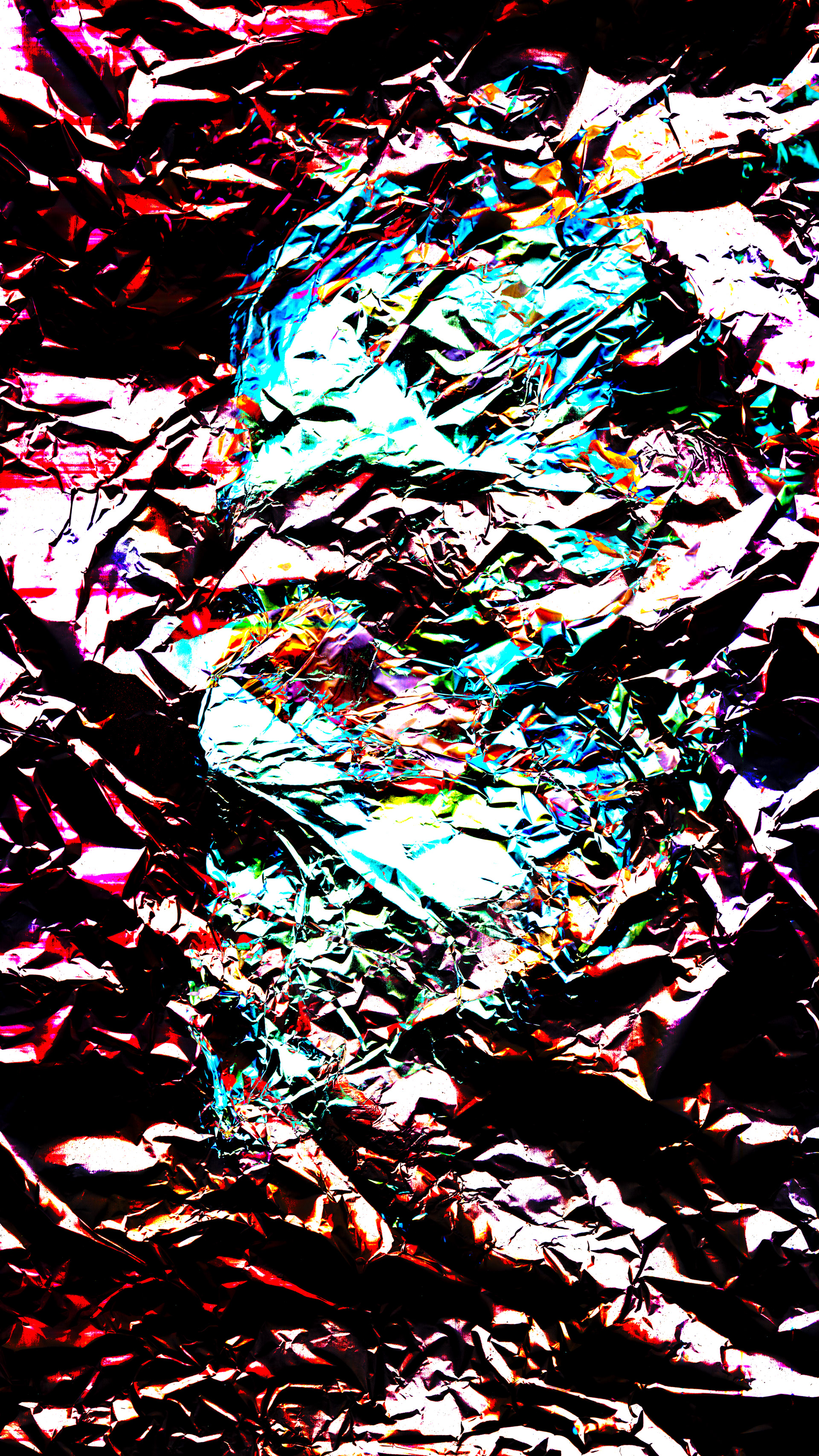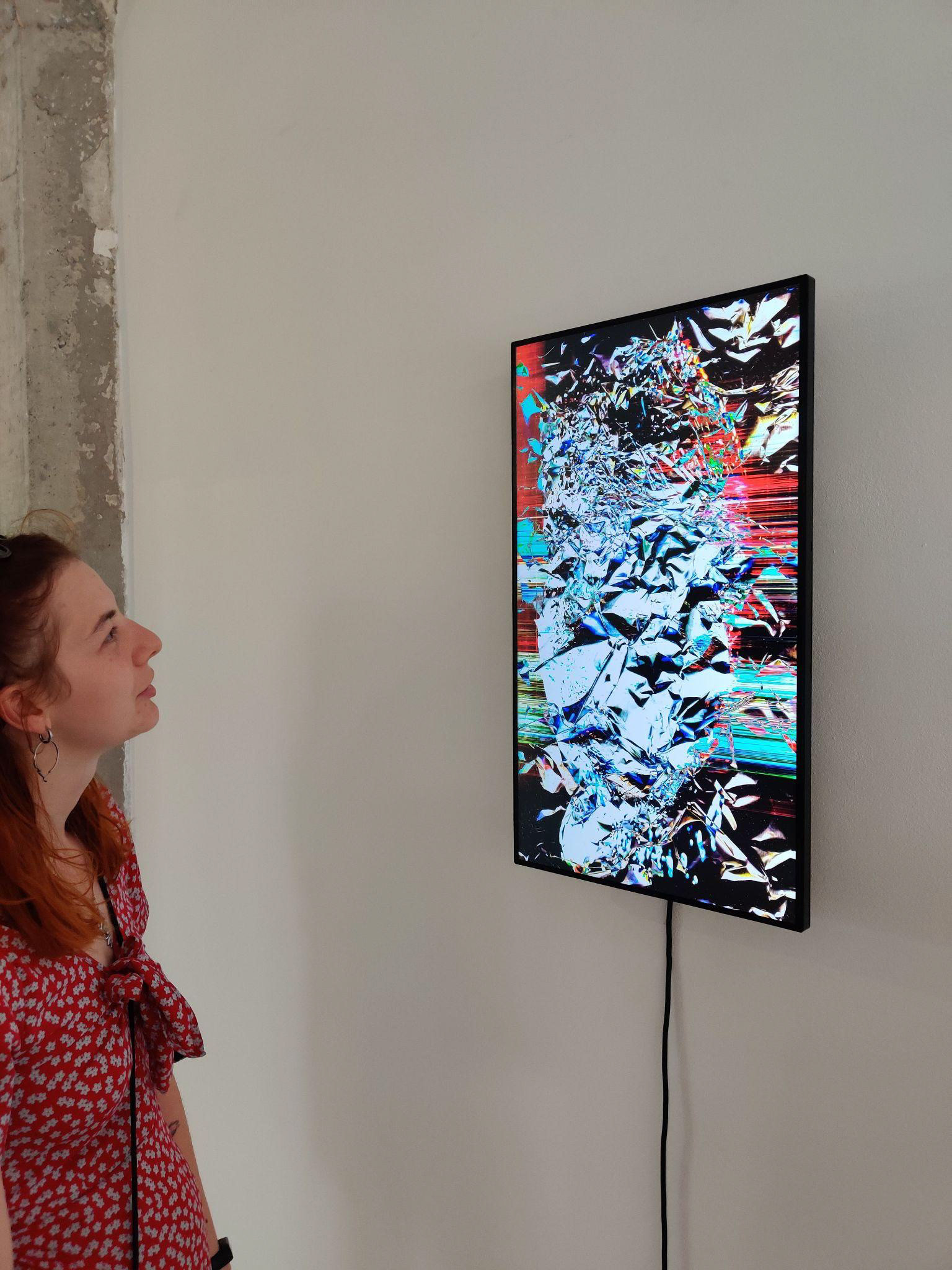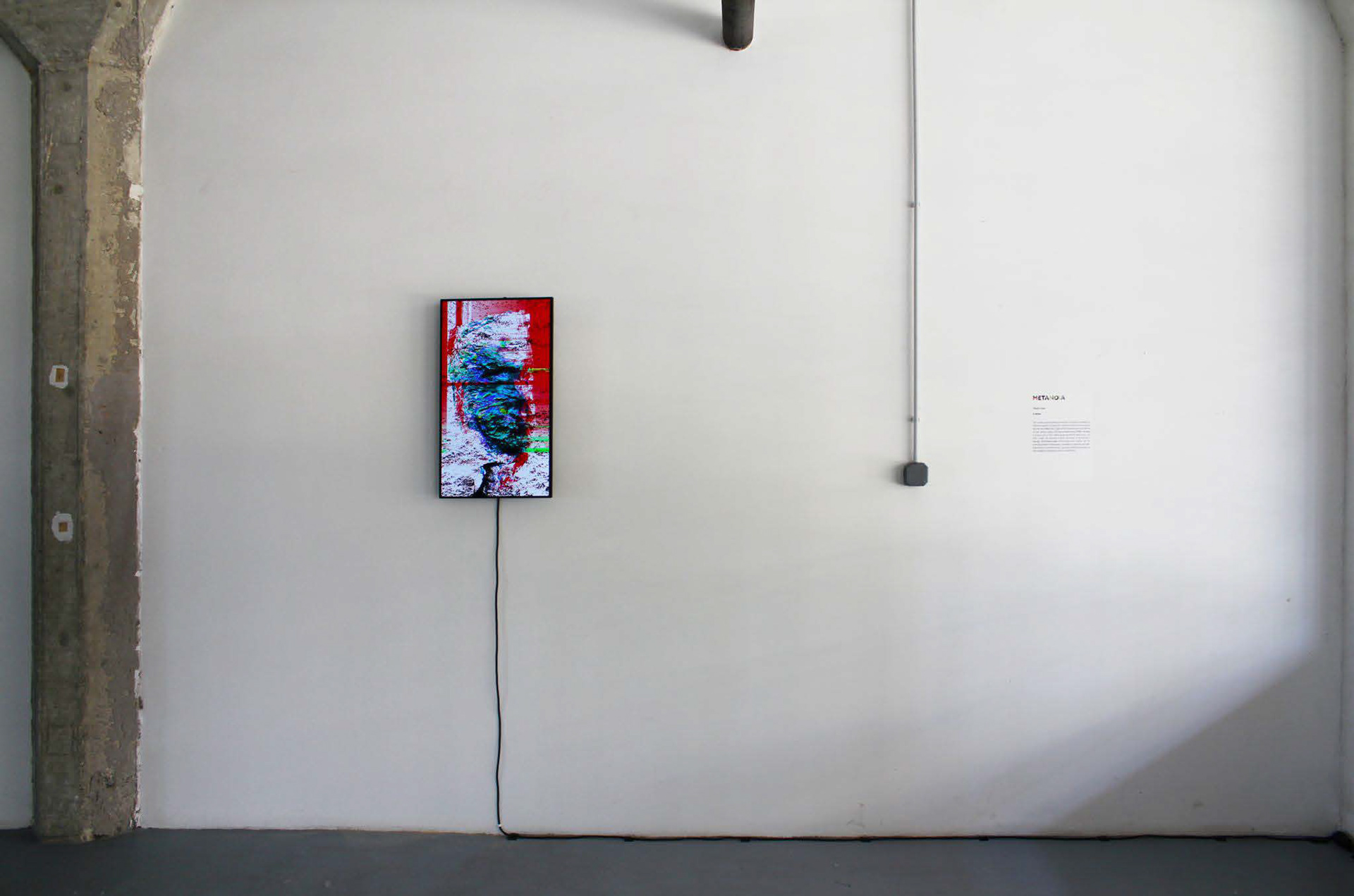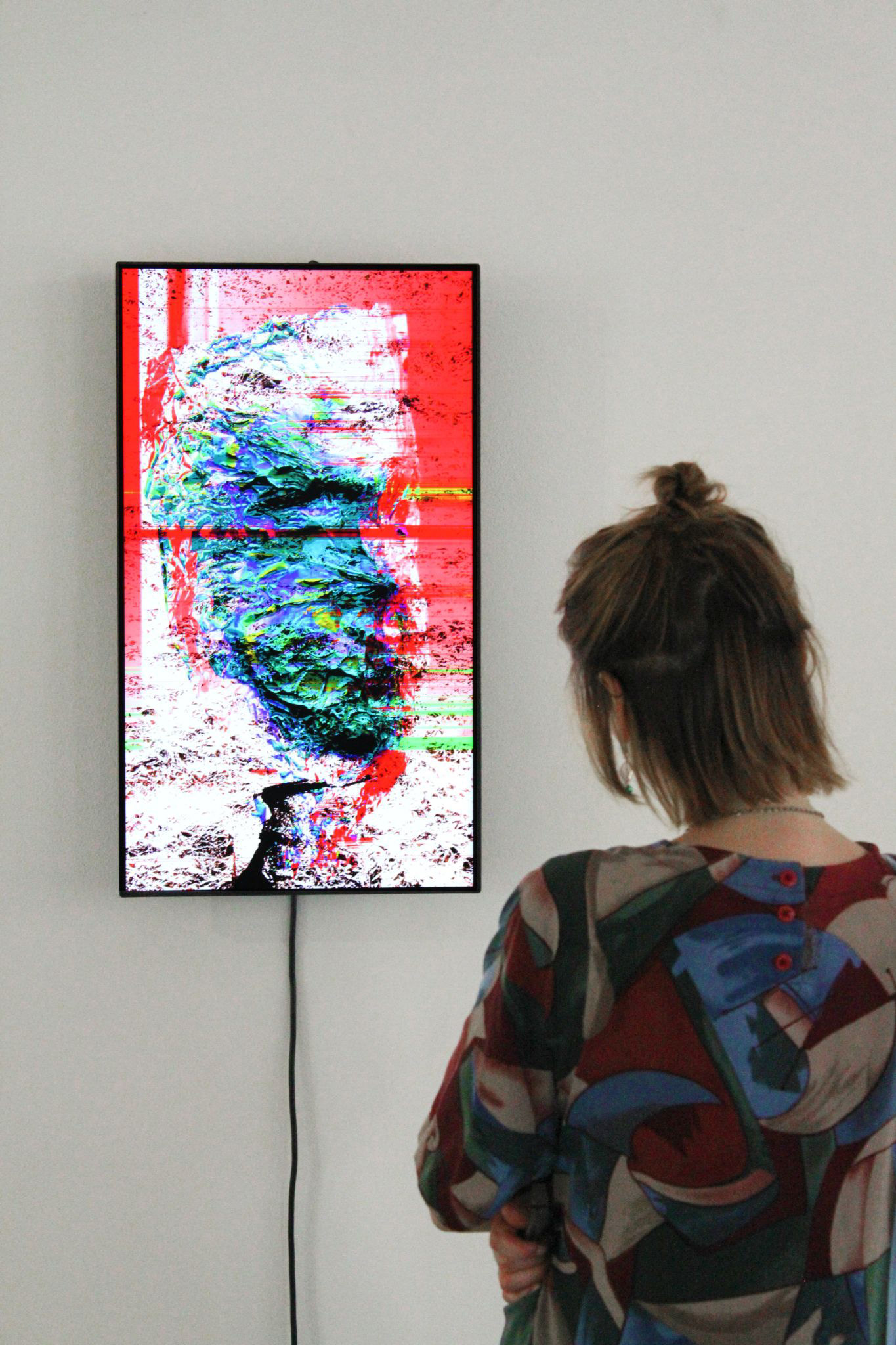Scanography, Lasers, Metanoia Exhibition, Pragovka, 2021
The n-verse project explores the border of physical and digital by intertwining one into the other. Scanners of various forms capture not only the reflections of light off 3D structures but also the flux of time. While it takes a 1D scanner head around fifteen minutes to imprint over a half a billion pixels painted by lasers into a 2D 20K+ image, 4D scanners provide hundreds of thousands of spatially distributed pixels thirty times each second. All this multidimensional information is enabled by presence and light. Displacement, transformations, layering, blending and delay are what shapes my expression and your experience.




What is a dimension in the simplest version of itself? Can it exist and present itself to us without relations to other dimensions or it becomes trapped in its context as long as you have more than one? Can it be turned into a material? In terms of geometry the answers can be more or less straightforward depending on perspective. In artistic exploration, however, new modes and models can emerge. Three dimensions of space and one dimension of time is what our reality is understood to be. A point without any reference is dimensionless, a line in this context is one-dimensional, a square is two-dimensional, and a cube is three-dimensional. Add transformation as propagation of time and the four-dimensional spacetime is complete. Nevertheless, the linearity of geometrical interdependence in this concept can be difficult to leave as these basic geometrical forms logically always build themselves up from forms with lower number of dimensions. If, however, new ideas and processes, ways of mapping, and less linear relationships are introduced into the interplay of dimensions, new types of experiences and artworks become possible. Combined with the interplay of physical and digital and with placing presence into the center of everything, the infinity of reality as well as the reality of infinity can be explored. In my systems everything feeds back onto everything. From its capture onto a chip inside a sensor light takes many different paths and splits into different forms that shape various complex experiences. From ultimately static ultra-high-resolution light scans to dynamic hyper-dimensional mapping of spacetime the n-verse project aims to experiment with dimensions and light-enabled information in its raw form through non-linearity and abstraction, both conceptual and expressive.




Applying a nonlinear multidimensional approach to not only capture, but also to express the complexity and mesmerizing depth of a human facial expression and the special way our perception system treats this visual input requires both simplification and addition. Firstly, I imprint a face into a reflection mask that turns a basic material of aluminum foil into a reflective structure with an almost infinite number of mirrors oriented in all possible directions. Directions that are not random but together with the size of these mirrors reveal and create through their relations both the structure as well as the process of hands shaping the details of one’s own face into mountains and valleys. Secondly, I carefully place the mask onto a high-resolution flatbed scanner choosing a position and orientation. Then as a one-dimensional scanner head slowly moves on its linear path and digitizes a line after a line of information how light and its color interact with the reflective physical structure and its depth, I paint on it with laser light tracing features, edges and searching for moments of complex exploding reflections as well as moments of light silence. It takes approximately fifteen minutes for the scanner head to capture over half a billion pixels. Distance, angle, laser type, shakiness of my hands and above all the overall intentions as well as the momentary idea and its expression determine the imprinted light information. While the mask scans are the key in my compositions of portraits, I use additional layers of scans for background and blending. Through experimentation with several different techniques, best outcomes come from direct laser painting onto the scanning head - a process I have explored ten years ago and that inspired me to restart working with ultra-high resolution scanning. In some compositions, the background is captured only by scanning a mostly flat crumpled aluminium sheet. The search for the expressive outcome for each portrait in Photoshop is a rather long process where a complex combination of a small number of layers and their exposure, offset, and gamma settings together with blending modes makes the final result emerge.